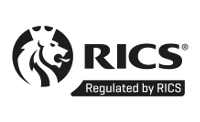Our Client was looking to take the lease of a small retail unit in Winchester High Street. The propose demised formed the ground floor of a period building which had a separately accessed maisonette above which did not form part of our Clients’ proposed demise. Due to the age of the building our Client had concerns over their potential liabilities and instructed us to prepare a building survey report to advise on the building, its condition and their potential liabilities. This instruction was subject to a tight timescale and the inspection was undertaken 2 working days following the confirmation of the instruction and the building survey report issued 3 days after the site survey.
The inspection was undertaken and a number of issues were highlighted to the Client in the building survey report. These issues included the fact that the period building had been subject to previous structural movement and repair. Our Clients’ lease was internally repairing and insuring only however we recommended they checked to confirm not only the extent of their demise which would impact on their dilapidations’ obligations under their lease, but also their service charge liabilities. Leases in multi-let properties often include a service charge to cover the cost of repairs and maintenance of common parts. Those elements outside of the demised areas are typically managed and repaired by the landlord with the cost of those repairs typically borne by the tenants through their service charge contributions.
The building survey report set out the nature of the demise and in addition to the structural defects also noted areas of damp and fire separation issues between the retail unit and the maisonette above. In addition to the more critical defects general items of disrepair were highlighted that our Client would need to resolve as part of their shop fit out.
The building survey report enabled our Client to negotiate with the landlord as part of their re-acquisition discussions to limit their future liabilities with regards the pre-existing defects.
